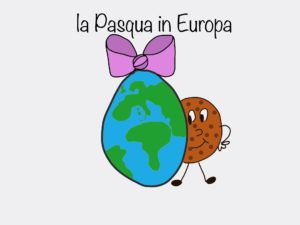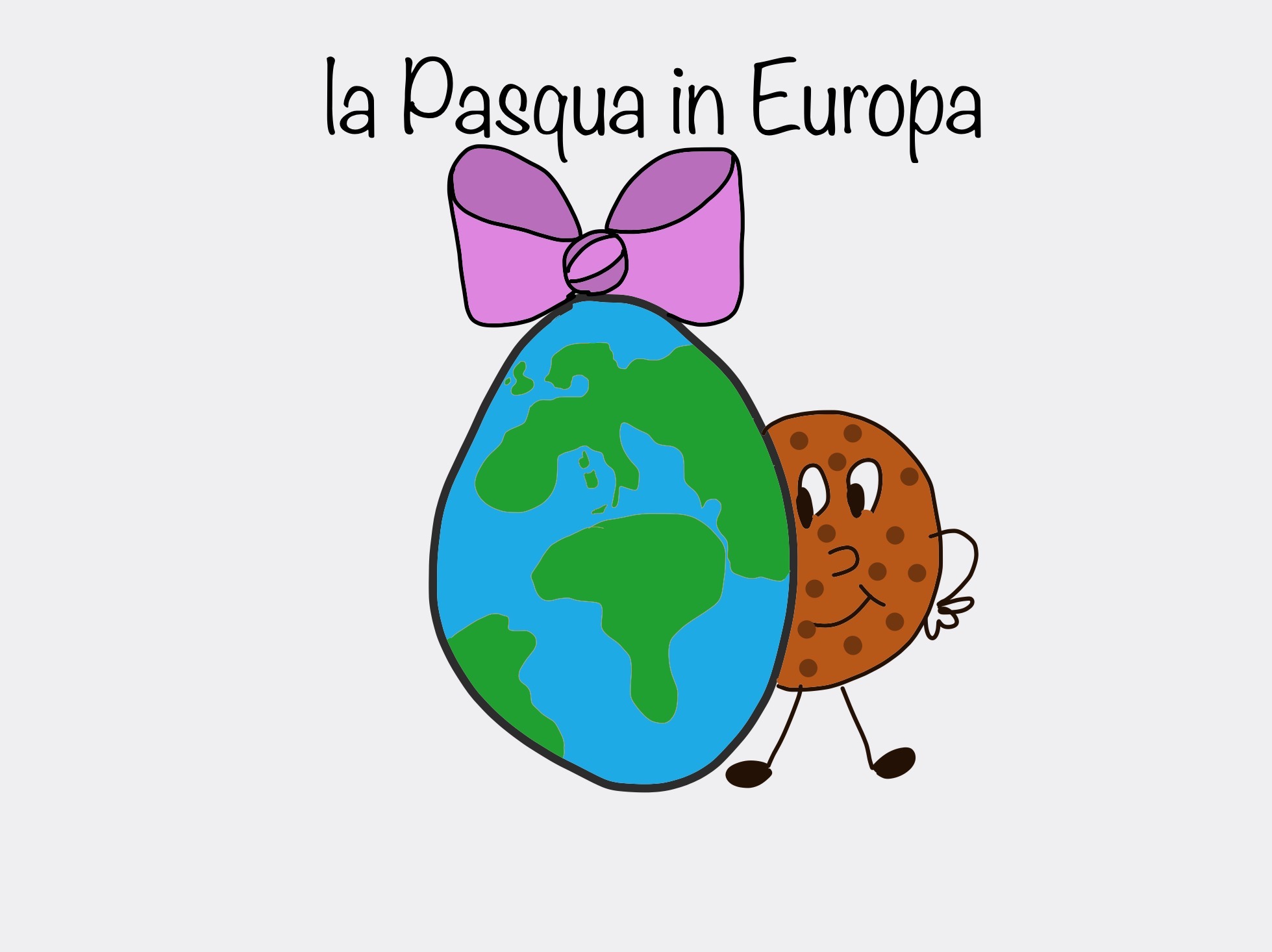
Anche per me, da quando ho vissuto in Germania tanti anni fa, l’albero di Pasqua, l’OSTER BAUM, è una tradizione acquisita ed amata. Mi ricordo quanto rimasi affascinata la prima volta che vidi nelle vetrine dei negozi di Düsseldorf i rami addobbati con uova disegnate e coloratissime …
L’albero di Patrizia, sui toni dell’azzurro, richiama molto il significato religioso: le uova rappresentano i germogli della nascita a nuova vita, la Resurrezione di Gesù.
Al di là del significato religioso, le uova sono al centro delle tradizioni di Pasqua ovunque nel mondo.
In Germania, Austria e Svizzera si colorano e si nascondono nel giardino o all’interno dell’abitazione , poi si invitano i bimbi a cercarle, lasciando credere che sono state lasciate dai leprotti.
In Francia , invece si racconta che le uova sono nascoste e portate nei giardini dalle campane, volate a Roma durante la notte del Venerdì Santo per procurarsele.
In Inghilterra, fra le varie manifestazioni per questa ricorrenza- incontri con il coniglio pasquale, corse di paperelle di gomma e workshop per fabbricare dolcetti- molto carina è la danza, di tradizione vittoriana, che si tiene a Blists Hill: gli abitanti ballano per la cittadina , cercando di non calpestare le uova collocate lungo il percorso.
Ancora giochi nei Paesi Scandinavi: tra i più noti c’è quello di farle rotolare numerose giù da un dosso: vince chi le lancia più lontano mantenendo il guscio integro.
In Danimarca si comincia a festeggiare la Pasqua il prima possibile: si comprano piccoli tulipani, narcisi, giacinti, bucaneve e primule da piantare in giardino dopo i festeggiamenti che vengono allietati da una birra esclusivamente pasquale, la Påskebryg.
Le uova nel Nord Europa assumono anche altri significati meno religiosi: andare in chiesa con in tasca un uovo “nato” il Giovedì Santo smaschera le streghe, collocarne uno in ogni angolo di un campo aiuta invece ad avere un abbondante raccolto. Gli Ortodossi celebrano la ricorrenza dei morti il venerdì successivo al giorno di Pasqua. In questa occasione qualcuno colora le uova di rosso e le mette sopra le tombe, come augurio di felice vita ultraterrena per i cari defunti .Questa tradizione è legata alla leggenda di Maria che faceva divertire il suo Bambino con uova colorate: il giorno di Pasqua, quando si recò al sepolcro, ne trovò di colore rosso sparse tutte intorno.
BUONA PASQUA a tutti!
Mara
Since I lived in Germany, many years ago, the Easter tree, OSTER BAUM, is a really loved tradition also for me. I remember how much fascinated I was the first time I saw branches decorated with brightly colored eggs in the shop windows in Düsseldorf ……
Patrizia’s tree, in shades of blue, strongly recalls the religious meaning: the eggs represent the buds of birth to new life, the Resurrection of Jesus.
Beyond the religious significance, eggs are at the center of Easter traditions throughout the world.
In Germany, Austria and Switzerland they are colored and hidden in the garden or inside the house, then the children are invited to look for them, leaving them to believe that they have been left behind by rabbits.
Beyond the religious significance, eggs are at the center of Easter traditions throughout the world.
In England, among the various events for this occasion – meetings with the Easter bunny, rubber ducks and workshops to make sweets – very nice is the dance, of Victorian tradition, held in Blists Hill: the inhabitants dance for the town, trying not to step on the eggs placed along the way.
In the Scandinavian countries yhey still play a well known game: they roll the eggs down from a slope: the one who throws them farther keeping the shell intact wins.
In Denmark they begin to celebrate Easter as soon as possible: they buy small tulips, daffodils, hyacinths. snowdrops and primroses to be planted in the garden after festivities that are cheered by an exclusively Easter beer, the Påskebryg.
The eggs in Northern Europe also take on other less religious meanings: going to church with a “born” egg in your pocket on Holy Thursday unmasks the witches, placing one in every corner of a field instead helps to have an abundant harvest. The Orthodox celebrate the recurrence of the dead on the Friday after Easter. On this occasion someone colors the red eggs and puts them on top of the graves, as a wish for happy afterlife for the beloved dead. This tradition is linked to the legend of Mary who was amusing her Child with colored eggs: Easter Day, when he went to the sepulcher, he found red ones scattered all around.
Happy Easter!
Mara







